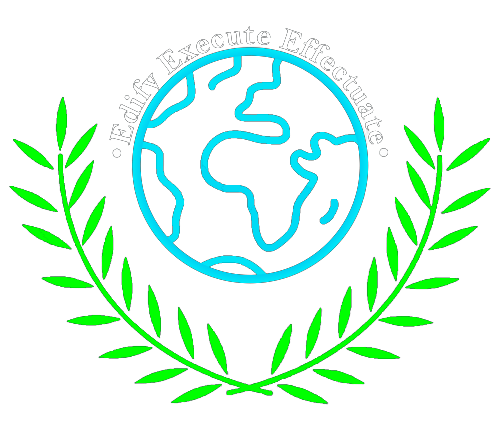
Cybersecurity Policies and Challenges in Public Sector Governance
INTRODUCTION In today’s hyper-connected world, digital technologies shape every aspect of our personal, economic, and political lives. From communication and banking to healthcare and critical infrastructure, nearly every sector relies on secure and stable digital systems. Yet, with these advancements come growing threats of cyberattacks, data breaches, misinformation, surveillance, and digital warfare. These threats do not respect national borders, and their impact can be devastating and far-reaching. As a result, cybersecurity has emerged as a top global priority, demanding robust and effective legal responses. It has become one of the most critical areas of concern for governments, businesses, and individuals across the world. As technology advances, so do the risks and threats to digital systems. Cyberattacks can target governments, critical infrastructure, hospitals, banks, and even personal devices. GLOBAL APPROACHES TO POLICY REGULATION Global legislative measures and compliance requirements in cybersecurity differ significantly across regions, reflecting varying regulatory philosophies, enforcement mechanisms, and national priorities. In the United States, cybersecurity regulation adopts a decentralised, sector-specific approach. This model provides flexibility for industries but also results in regulatory fragmentation. The Computer Fraud and Abuse Act (CFAA, 1986) is a foundational law addressing unauthorised access to computer systems. While pivotal, it has drawn criticism for being overly broad and outdated in an era of evolving cyber threats. Additionally, enforcement often falls under agencies like the Federal Trade Commission (FTC), which has played a central role in regulating cybersecurity through case law, as seen in FTC v. Wyndham Worldwide Corp. (2015), where the court held companies accountable for failing to implement reasonable cybersecurity practices. In contrast, the European Union has developed a more centralised and uniform regulatory framework. The General Data Protection Regulation (GDPR, 2018) is one of the world’s most comprehensive data protection laws, setting strict standards for data processing, consent, and breach notification, along with significant penalties for non-compliance. Complementing GDPR, the Network and Information Systems Directive (NISD, 2018) establishes security and incident reporting requirements for operators of essential services and digital service providers. Key rulings like Schrems II (2020), which invalidated the EU-U.S. Privacy Shield over surveillance concerns, have further complicated transatlantic data transfers and highlighted the global impact of EU regulations. The Asia-Pacific region exhibits a diverse regulatory landscape shaped by differing national priorities. China’s Cybersecurity Law (2017) is marked by its emphasis on data localisation, governmental oversight, and control over cross-border data flows, reinforcing state cybersecurity sovereignty. In Japan, the Basic Act on Cybersecurity (2014, updated 2021) empowers the National Centre of Incident Readiness and Strategy for Cybersecurity (NISC) to lead national cybersecurity policy, fostering public-private cooperation. India follows a hybrid model: the Information Technology Act (2000) addresses cyber crimes like hacking and identity theft, while the newer Digital Personal Data Protection Act (2023) strengthens privacy rights but allows exceptions for state interests. India also prioritises critical digital infrastructure, such as Aadhaar and UPI. Australia’s Security of Critical Infrastructure Act (SOCI, 2018; amended 2021) mandates incident reporting and imposes obligations on operators of essential infrastructure to maintain cyber resilience. In South Africa, a blend of criminal and data privacy laws has emerged through the Cybercrimes Act (2020) and the Protection of Personal Information Act (POPIA, 2013), aiming to combat digital offences while safeguarding personal data. Judicial decisions continue to shape global cybersecurity norms. India’s Shreya Singhal v. Union of India (2015) invalidated Section 66A of the IT Act, reinforcing free speech protections online. In the UK, R v. Andrew Skelton (2018) clarified corporate liability for internal data breaches. In China, Qihoo 360 v. Tencent (2013) exposed tensions between cybersecurity regulation and market competition. International Legal Instruments The Budapest Convention (2001) is the leading international treaty on cybercrime, promoting the criminalisation of offences like hacking and fostering cross-border cooperation (Council of Europe, 2001). However, key countries like India, China, and Russia have not signed it. India cites sovereignty concerns but supports many of its principles. The UN promotes responsible state behaviour through forums like the GGE and OEWG, though these often lack binding outcomes. Regional efforts such as the African Union’s Malabo Convention and frameworks from the Arab League and SCO remain limited by weak enforcement. Legal Challenges in Cyber Governance and the Way Forward One of the biggest legal challenges in cybersecurity is the lack of a global, binding treaty. This leads to conflicting national laws and confusion over jurisdiction when cybercrimes cross borders. Traditional mechanisms like Mutual Legal Assistance Treaties (MLATs) are often too slow for fast-moving digital threats. Another issue is that laws struggle to keep pace with rapidly evolving technologies. Areas like AI, cyber warfare, blockchain, and cloud regulation present new risks that most legal systems are not yet prepared for To move forward, countries must harmonise key laws, improve cross-border cooperation, and build capacity through training and financial support. Public-private partnerships and awareness campaigns are also vital. Educational institutions should help train future legal and technical experts to ensure effective cybersecurity governance. ECONOMICS AND RESOURCES OF CYBERSECURITY In today’s digital world, cybersecurity is no longer just a technical issue. It has become an economic, political, and social challenge. As data, infrastructure, and services go online, protecting them involves not just money but also smart policy, strong partnerships, and proper regulations. Three main issues define the economics of cybersecurity: limited resources and outdated technology, the growing role of public-private partnerships, and different regulations across countries. Many organisations, especially small businesses and government departments, cannot afford the latest security tools. They often rely on old systems that cannot defend against modern cyber threats. For example, the 2017 WannaCry ransomware attack hit outdated Microsoft systems and caused damage in over 150 countries, affecting hospitals, businesses, and governments. There’s also a shortage of skilled cybersecurity professionals. As threats become more advanced, the number of trained experts is not enough. This creates a gap between the threats we face and our ability to deal with them. Wealthy companies can afford better security, while smaller ones remain vulnerable, increasing the overall risk. To handle these challenges, governments and private companies are









